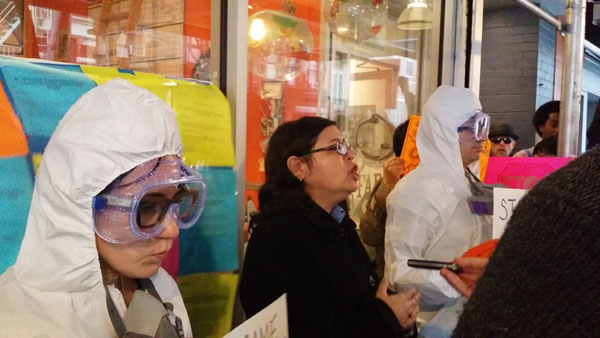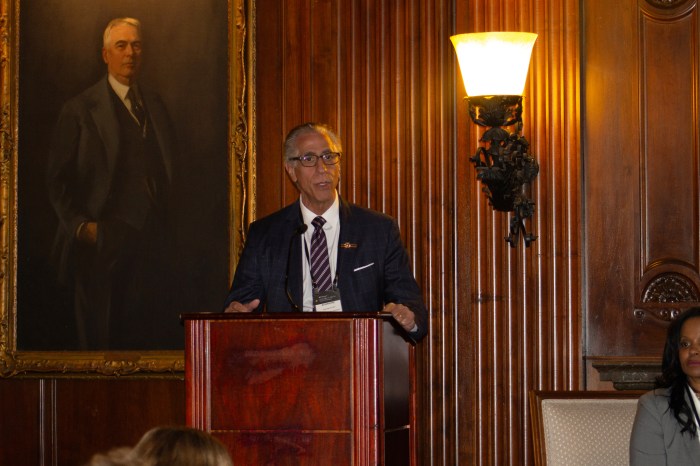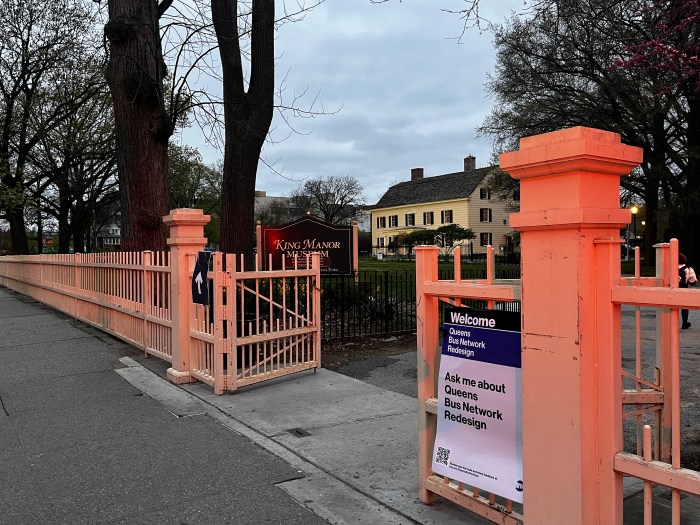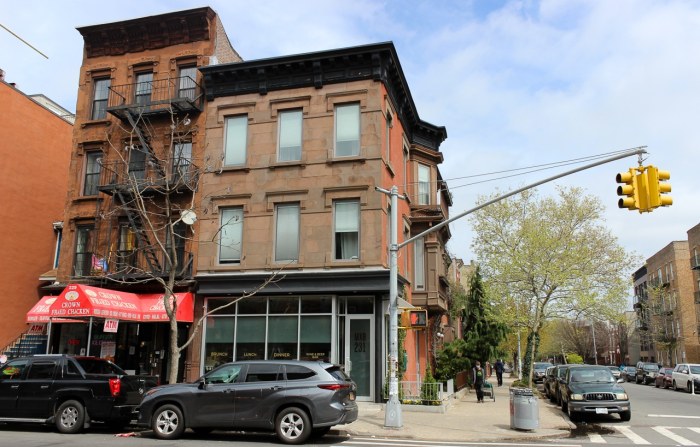
BY GERARD FLYNN | Beleaguered tenants from four Lower East Side buildings recently announced three additional lawsuits in Housing Court against landlord Samy Mahfar of SMA Equities.
Outfitted in a hazmat suit to protest the hazardous conditions he said he has faced, one tenant from 211 Rivington St. described living under siege-like conditions. He said unprotected workers had blasted layers of paint off tenement walls, raising dust tainted with dangerous levels of lead-based paint.
He was joined by other members of the Coalition of Mahfar Tenants at an April 20 press conference.
Another 211 Rivington St. tenant spoke of heat and gas interruptions on some of the winter’s coldest days, plus collapsing ceilings. These were just some of a long list of complaints against Mahfar, who couldn’t be reached for comment.
Lab tests on air quality during construction at another Mahfar-owned building revealed lead levels “nearly 3,000 times the federal threshold,” tenants said.
Rent-stabilized tenants, many of them minorities or immigrants with poor English skills, were visited by “tenant relocators” who tried to persuade them to leave with buyout offers. Among these was Michel Pimienta, who state Attorney General Eric Schneiderman last October made pay a $40,000 fine and agree to stop his relocation activities.
“Numerous times representatives would ask me to move to another borough every time they came to my apartment,” one tenant alleged.
The Mahfar Tenants Coalition also claims that guards were posted at one building’s entrance to block Department of Buildings inspectors from investigating complaints, and that they were successful all but once in turning D.O.B. personnel away.
Dust levels got so bad at one building that children were hospitalized following asthma attacks. Their mother also ended up getting sick due to having no heat for a month during construction, tenants said.
As if the hazardous conditions weren’t bad enough, there were also frivolous lawsuits, the coalition charged. These were used to drive terrified tenants out of their units, which were quickly put back on the market at rents up to five times their original value.
Repairs were not made, except in renovated apartments, according to the coalition.
A speaker from another Mahfar-owned building, 22 Spring St., vividly recalled what happened after Mahfar took over: The lead-dust levels rose, a phone line was cut, and the relocation specialists turned up, stressful enough to allegedly cause one tenant to suffer a heart attack, prompting her to leave.
Councilmembers Rosie Mendez and Margaret Chin praised the tenants’ courage in bringing the lawsuits. Chin called for greater coordination between the Department of Housing Preservation and Development and the Department of Buildings, the latter which, she said, needs comprehensive reform.
Chin questioned why D.O.H. is not working with D.O.B. to ensure that proper procedures for lead-paint removal, for example, are being followed.
State Senator Daniel Squadron demanded change in Albany and the end of vacancy decontrol, which he said offers incentive for landlords to harass rent-protected tenants.
Garrett Wright, a senior staff attorney with the Urban Justice Center, which filed the three lawsuits in Housing Court, said the process favors wealthy landlords, who can afford expensive attorney fees.
Tenants, Wright said, often end up “so scared, they will wind up leaving the apartment without going to court because they are afraid of being hit with attorney fees and costs, and landlords know that.”

















